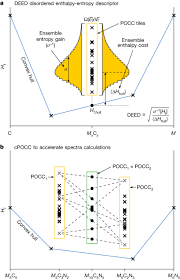Supermassive black hole at centre of Milky Way seen for first time

Event Horizon telescope captures image giving a glimpse of the turbulent heart of our galaxy

An image of the supermassive black hole at the heart of the Milky Way has been captured, giving the first direct glimpse of the “gentle giant” at the centre of our galaxy.
The black hole itself, known as Sagittarius A*, cannot be seen because no light or matter can escape its gravitational grip. But its shadow is traced out by a glowing, fuzzy ring of light and matter that is swirling on the precipice at close to the speed of light.
The image was captured by the Event Horizon telescope (EHT), a network of eight radio telescopes spanning locations from Antarctica to Spain and Chile, which produced the first image of a black hole in a galaxy called Messier 87 in 2019.
Prof Sera Markoff, an astrophysicist at the University of Amsterdam and co-chair of the EHT Science Council, said: “The Milky Way’s black hole was our main target, it’s our closest supermassive black hole and it’s the reason we set out to do this thing in the first place. It’s been a 100-year search for these things and so, scientifically, it’s a huge deal.”
The image provides compelling proof that there is a black hole at the centre of the Milky Way, which had been the working assumption of mainstream astronomy. A minority of scientists had continued to speculate about the possibility of other exotic objects, such as boson stars or clumps of dark matter.
“I’m personally happy about the fact it really drills home the fact that there is definitely a black hole at the centre of our galaxy,” said Dr Ziri Younsi, a member of the EHT collaboration based at University College London.
To the untrained eye, the latest image might appear roughly similar to that of the black hole, M87*, but the two objects are extremely different, according to the EHT team.
Sagittarius A* is consuming only a trickle of material, in contrast to the typical depiction of black holes as violent, ravenous monsters of the cosmos. “If SgrA* were a person, it would only consume a single grain of rice every million years,” said Michael Johnson of the Harvard-Smithsonian Center for Astrophysics.
M87*, by contrast, is one of the largest black holes in the universe and features vast, powerful jets that launch light and matter from its poles into intergalactic space.

“Sgr A* is giving us a view into the much more standard state of black holes: quiet and quiescent,” said Johnson. “[It] is exciting because it’s common.”
The latest observations also appear to show that our black hole’s angle of rotation is not neatly aligned with the galactic plane, but is off-kilter by about 30 degrees, and hint at spectacular magnetic activity similar to that seen in the sun’s atmosphere. Beyond the science, astronomers acknowledged an emotional connection with finally seeing the enigmatic object about which our home galaxy revolves.
“It’s another doughnut, but it’s our doughnut,” said Younsi.
Despite being local in astronomical terms at 26,000 light years away, observing SgrA* turned out to be more challenging than anticipated. The team spent five years analysing data acquired during fortuitously clear skies across several continents in April 2017.
Sagittarius A* is relatively small, meaning that the dust and gas in its accretion disc orbit in a matter of minutes rather than weeks, creating a moving target from one observation to the next. Markoff compared the observations with trying to photograph a puppy chasing its tail using a camera with a slow shutter speed. Scientists also had to peer through the galactic plane and filter out intervening stars and dust clouds from their images. Some combination of these factors – and possibly some extreme black hole phenomenon – explain the bright blobs in the image.
“We didn’t anticipate how evasive and elusive it would be,” said Younsi. “It was really a tough picture to take. It’s hard to overstate that.”
The EHT picks up radiation emitted by particles within the accretion disc that are heated to billions of degrees as they orbit the black hole before plunging into the central vortex. The blotchy halo in the image shows light bent by the powerful gravity of the black hole, which is 4m times more massive than that of our sun.
Ultimately, scientists hope that observing a range of black holes – fairly dormant ones like our own and turbulent giants like M87* – could help answer a chicken-and-egg style question about the evolution of galaxies.
“It’s an open question in galactic formation and evolution. We don’t know which came first, the galaxy or black hole,” said Prof Carole Mundell, an astrophysicist at the University of Bath who is not part of the EHT collaboration.
“From the technology perspective it’s mind-blowing that we can do this,” she said of the latest images.
The EHT team’s results are published on Thursday in a special issue of the Astrophysical Journal Letters.
- Space
- news


 United Kingdom
United Kingdom Argentina
Argentina  Australia
Australia  Austria
Austria  Brazil
Brazil  Canada
Canada  Germany
Germany  Ireland
Ireland  Italy
Italy  Malaysia
Malaysia  Mexico
Mexico  New Zealand
New Zealand  Poland
Poland  South Africa
South Africa  United States
United States 
























